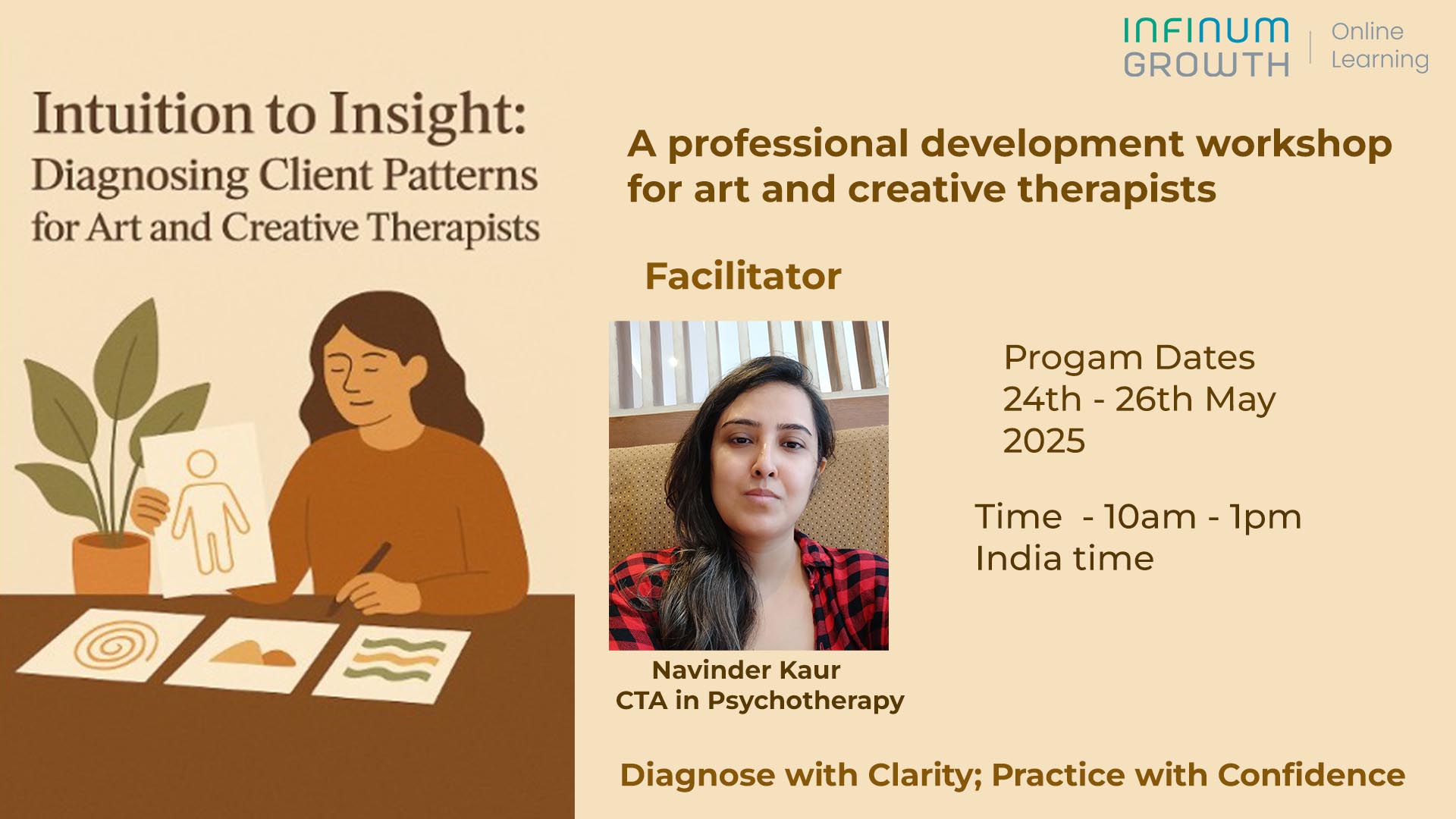Diagnose with Clarity; Practice with Confidence.
A professional development workshop for Art & Creative Therapists, who want to diagnose, conceptualize and intervene with confidence—without pathologizing their clients.
This workshop with 4 modules, brings focus on psychological issues and diagnosis methods, that will help diagnose individuals in order to deliver appropriate art & creative therapy support.
Key Takeaways
- ✔ Gain clarity in case formulation using established psychological theories
- ✔ Learn a structured yet soulful approach tailored for art-based practices
- ✔ Decode patterns, strengthen attunement, and expand your therapeutic impact
A program for Art & Creative Therapists
- Practicing art & creative therapists seeking greater clarity in diagnosis and intervention
- Therapists who want to integrate psychological theory into creative work — without pathologizing clients
- Practitioners looking to build confidence in case formulation using structured, non-DSM-based models
Facilitator
Navinder Kaur, Clinical Psychologist; Certified Transactional Analyst (Psychotherapy)
- Internationally certified Psychotherapist – Certified Transactional Analyst
- Founder of SelfWork Studio and Project Saarthi
- Blends Transactional Analysis, trauma-informed care, cultural sensitivity, and spirituality
- Works toward an inclusive and empowering model of mental health care
Workshop Modules
MODULE 1: Why Diagnosis Matters in Creative Therapies
- Understand the difference between clinical (DSM/ICD) and pattern-based diagnosis
- Learn why intuitive work still needs a structured, theory-anchored container
- Explore how theory deepens expressive work
MODULE 2: Foundational Theories Made Simple
- Break down 3–4 key psychological theories into usable concepts
- Spot client patterns through a non-pathologizing lens
MODULE 3: Theory in Practice: Building Your Signature Approach
- Apply theory without losing intuitive flow
- Integrate case data, client art, and therapist insight
MODULE 4: From Diagnosis to Treatment Direction
- Map observations into clear case formulations
- Use countertransference insightfully and ethically
- Know when to refer and how to collaborate with clinical professionals

